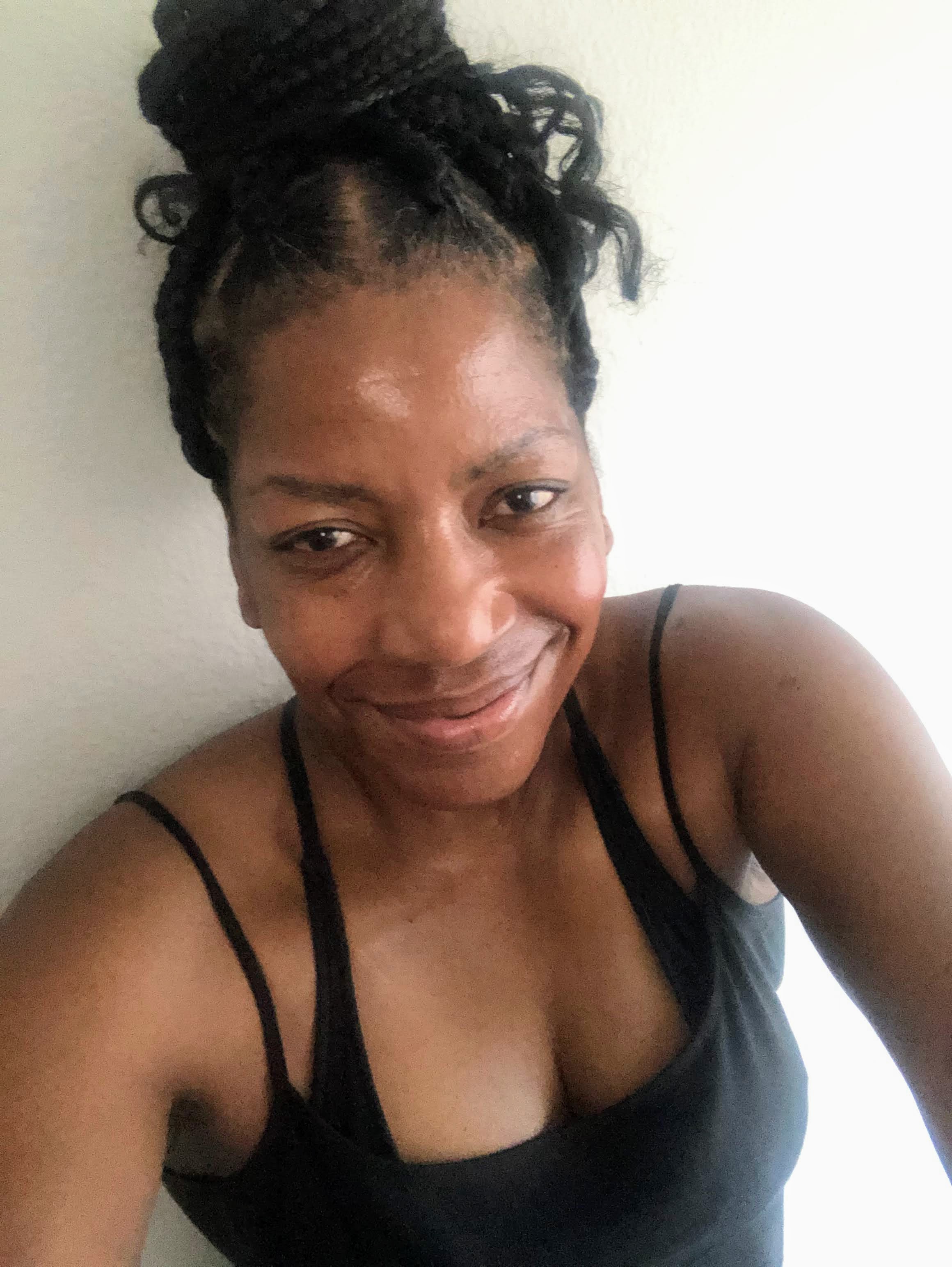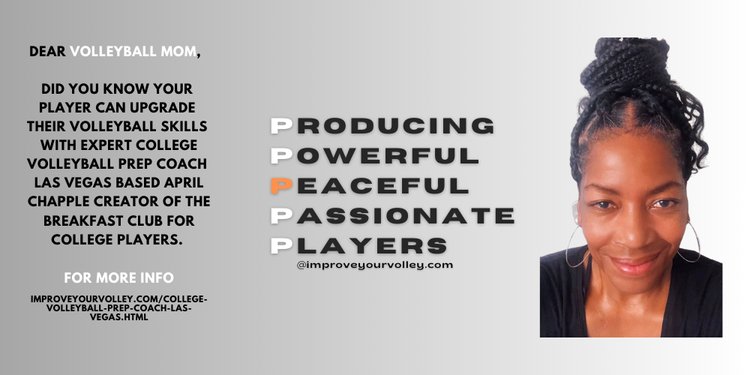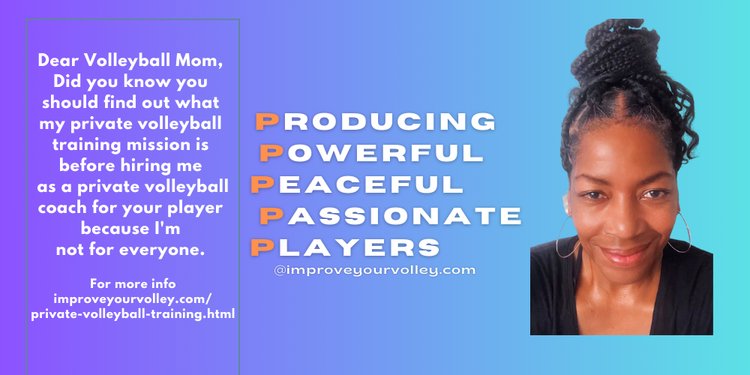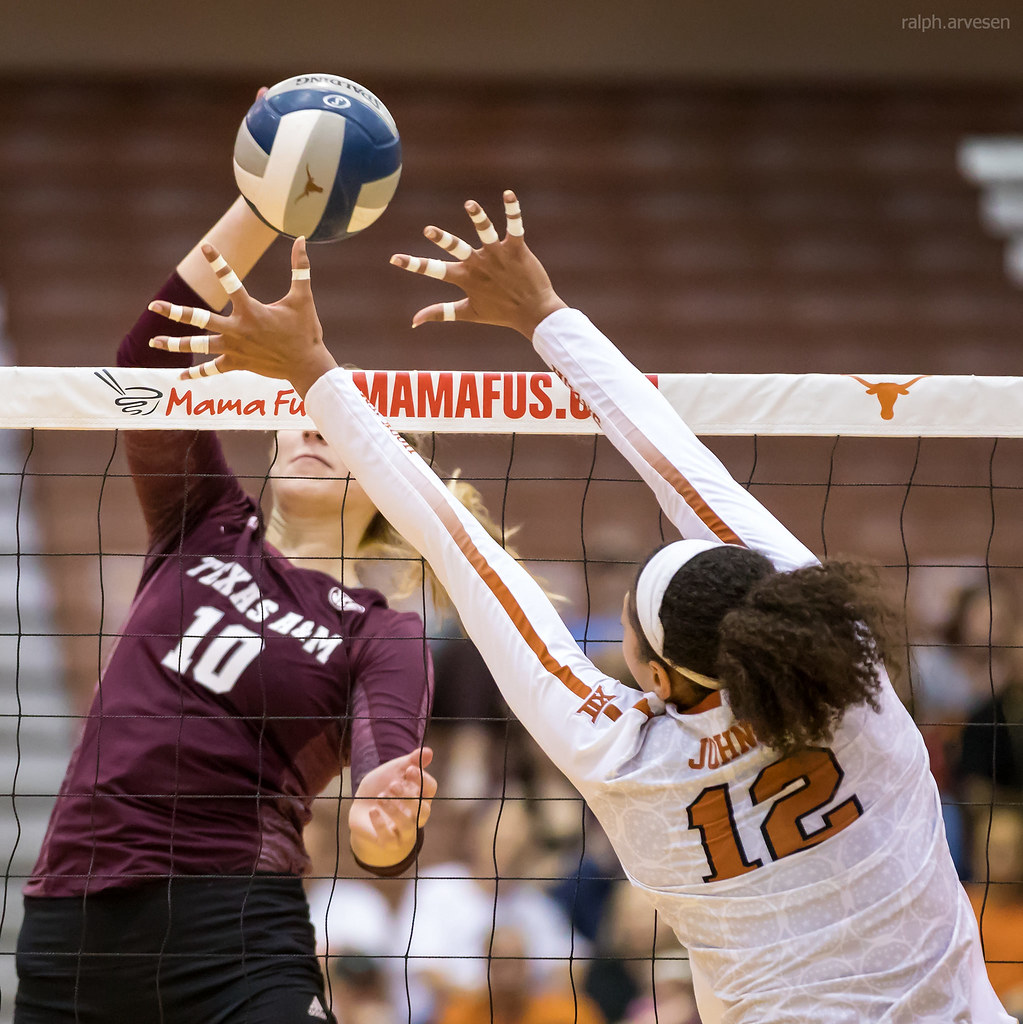- Improve Your Volleyball with Coach April
- Libero Volleyball Jargon For Savvy Moms
- Volleyball Defensive Terms Moms Should Know
 Dear Volleyball Mom,
Do You Know What Sets My Private Volleyball Training Apart From Anyone In Vegas?
I invite You to read what my private volleyball training mission says before considering hiring me as a private volleyball coach because I'm not available for everyone.
Dear Volleyball Mom,
Do You Know What Sets My Private Volleyball Training Apart From Anyone In Vegas?
I invite You to read what my private volleyball training mission says before considering hiring me as a private volleyball coach because I'm not available for everyone.Libero Lingo: Fun Volleyball Defensive Terms Every Mom Should Know
Unlock The Secret Language Of Volleyball Defensive Terms To Boost Your Volleyball IQ Become Your Child's Ultimate Supporter On and Off The Court.
As a volleyball mom, understanding the volleyball defensive terms used in a game or practice can make a world of difference in supporting your young player.
Volleyball Digging Drills: The 'Hit and Dig" volleyball drill is used in warmups to improve hitting technique and digging technique skills.
Let's dive into the essential defensive terms that will have you speaking libero in no time!
SUSCRIBE
To My Email Newsletter Below!
Dig Deep: How To Excel At This Important Defensive Move
A dig is one of the volleyball defensive terms that describes the defensive skill of preventing the ball from hitting the floor after an opponent's attack. It's the libero's bread and butter!
Example in action:
Your child
- moves to a ball
- drops hips while extending their arm to create a platform
- that they'll use to deflect a hard hit once it crosses the net into their court back up in the air
- redirecting the ball up just before it hits the ground
- so the next player can set or hit the ball
which continues the play.
4 Digging Drills For Volleyball Players Like A Fun Game of Hitter vs. Digger - Winner scores 10 points First
A fun game of Hitter vs. Digger: Winner scores 10 points
First the Hitter hits hard deep cross court and scores a point when digger can’t touch it or digs an unplayable ball.
Digger scores a point when they dig a playable ball.
For beginners, hitter errors may not count but for more advanced players hits in the net or out of bounds are points scored for the digger.
Mom Tip:
Celebrate successful digs with enthusiasm. It boosts your child's confidence and reinforces the importance of this digging skill.
Up and At 'Em: The Power of Positive Communication
Basic Volleyball Drills
How To Touch More Balls When You're Digging
- Keeping your platform arms a ball’s distance away from your body and
- putting your hands together once you’ve landed in your adjusted defensive position
is the key to touching more balls hit right at you and controlling those balls so they’re more likely to reach their target .
What is an "up?"
"Up" is a communication call made by defenders to alert teammates that they've successfully dug the ball.
Example in action:
You hear players yelling "Up!" after someone in defense digs up a powerful spike. This lets the setter know the ball is coming their way.
Mom Tip:
Encourage your child to use clear, loud communication during practice and games. It's a skill that translates well off the court too!
The Magic Touch: Understanding Ball Contact
What is a "touch?"
A touch occurs when a defender makes contact with the ball, even if they don't control it fully.
When a defender makes contact with the ball, even if they don't control it. Blockers who go up to block a ball and one of their blocking hands make contact with the ball as it crosses over the net and as they land will yell to their backrow teammates "touch" so they know how many more contacts they have before they need to get the ball back over the net
Example in action:
Your child barely grazes a hard-hit ball with their fingertips. Even though they didn't control it, that's still considered a touch.
Mom tip:
Help your child understand the importance of owning up to touches. It's not just about the rules; it's about sportsmanship and honesty.
Defense Never Rests: The Art of Protecting the Court
Defense is the overall act of protecting against opponent attacks. It's a team effort, but the libero often leads the charge.
Example in action:
Watch how the entire back row shifts and adjusts based on the opponent's attack formation. That's defense in action!
Mom tip:
Encourage your child to take pride in their defensive skills. While spiking might get the glory, great defense wins games.
Beyond the Basics: Advanced Defensive Moves
As players advance, they'll encounter more complex defensive terms:
- What Is A Pancake?:
A pancake is one of the volleyball defensive terms that describes a last-resort move where a player slides their hand along the floor to get under a low ball.
A last-resort defensive technique where a player places their hand on the floor, palm down, to get under a ball so that the ball contacts their hand and bounces back into the air making it a playable ball, the idea being that the ball touches the hand instead of the floor
- What Is A Roll?:
A technique to quickly recover after diving for a ball.
A defensive technique used after a player runs to get to a ball that has not been hit right to them.
The roll or barrel roll is one of the several acrobatic individual defense techniques you can use to collapse to the ground after finishing a volleyball dig that takes you off balance.
This is a way that players can cover more court area to dig a ball.
The roll is how a player approaches or runs down a ball to play it before finishing to the floor, recovering and getting up to play another ball
- What Is Your Platform?:
The flat surface created by a player's forearms for passing or digging.
The passing platform is the flat surface, two inches above the wrists and 2-3 inches below the inside of your elbows, created when a player holds their wrists together with both thumbs point to the ground, while contacting the ball, deflecting it back up into the air towards their intended target (without swinging the arms above the level of the chest).
Example in action:
Your child makes a spectacular save by extending their arm and getting a pancake under a ball that seemed impossible to reach!
Mom tip:
Praise effort and creativity in defensive plays. These advanced moves often come from quick thinking and determination.
Putting It All Together: The Libero's Defensive Dance
Understanding these terms helps you appreciate the complexity of the libero's role:
- What is Reading the game?
The skill a player uses to watch every move the ball makes while on the opposing team's court in order to anticipate what moves the next opposing player to touch the ball will make...and then moving to a spot on their court based on what they see is about to happen
- What is Positioning?:
Placing oneself in the best spot to defend against attacks.
How a backcourt player positions themselves behind a blocker in front of them in the front row
- What is Transition?:
Quickly moving from defense to an offensive ready position.
Transition which means "change" takes place when during a rally when one team that sends a ball over the net now goes from offense to defense and as play continues...once a team sends the ball over the net its on offense and when the ball crosses the net towards them....that same team now sets up in defense...
Example in action:
Watch how the libero adjusts their position based on the opponent's hitters and the set they receive.
Mom Tip:
Discuss defensive strategies with your child after games. Ask what they noticed about the opponent's attacks and how they adjusted their defense.
Moving Forward...
When you learn these defensive terms, you're not just learning volleyball jargon – you're gaining insight into your child's world on the court.
Use this knowledge to
- have more meaningful conversations about the game,
- offer informed support during challenging times and
- celebrate the nuances of great defensive plays
Remember, your understanding and enthusiasm can be a powerful motivator for your young player.
So the next time you're cheering from the sidelines, you'll be ready with the right words to encourage and support your budding libero.
From Lady Vol to Legend: Coach April Produces Powerful Passionate Players...is that you?
What Are You Looking For?

Hi there!
Thanks for stopping by. Hope you learned something today that will help you reach your volleyball goals.
Be sure to subscribe to my email newsletter so you can learn more each week!
Stay strong! Stay motivated!
-Coach April

SUSCRIBE
to my email newsletter below!
Vegas Volleyball's Unsung Heroes: Celebrating Moms with Peace Love Volleyball Shirts
Ready to energize your volleyball mom journey?
Subscribe to my 'Producing Powerful Passionate Peaceful Players' email list above on ImproveYourVolley.com.
You'll receive energy-boosting tips, exclusive insights from me, Coach April Chapple on maintaining momentum in volleyball.
Let's power up the Vegas volleyball scene together!
Recent Articles
-
Frequently Asked Libero Volleyball Position Questions Answered
Apr 14, 25 08:10 PM
I answer the most frequently asked libero volleyball position questions many players and coaches ask that will help you learn about the player responsibilities. -
Coach April's Peace Love Volleyball Phrases For T-Shirts Honor Moms
Apr 13, 25 03:49 PM
Whether on the court or in everyday life, April Chapple's volleyball phrases for t-shirts are serving inspiration for players and moms, one message at a time. -
What Is A Setter In Volleyball? My Setting Guide With Answers To FAQs
Apr 13, 25 12:36 AM
Learn what a volleyball setter is from a champion coach. Get expert insights, training tips, and proven strategies for volleyball's most strategic position.






























